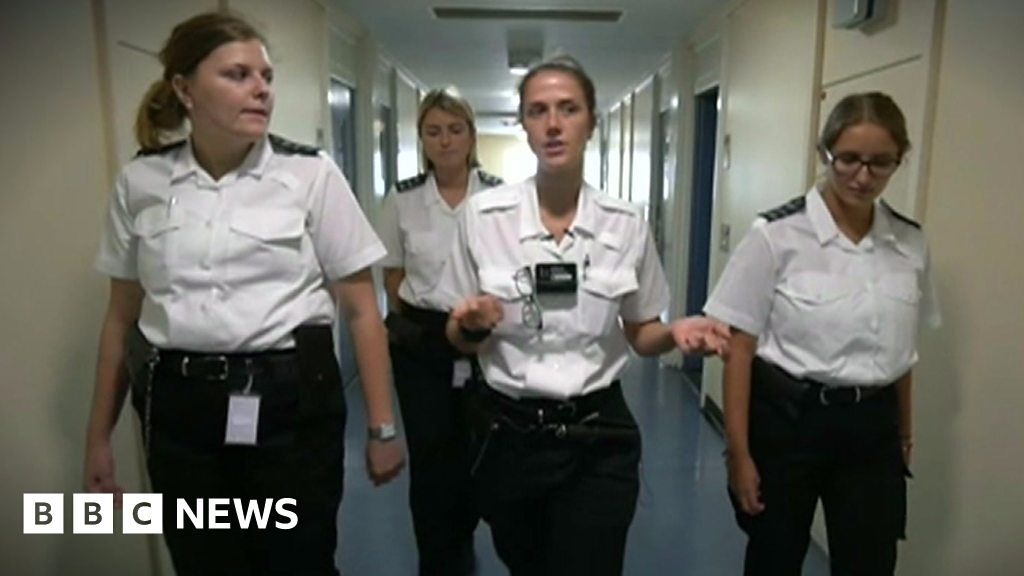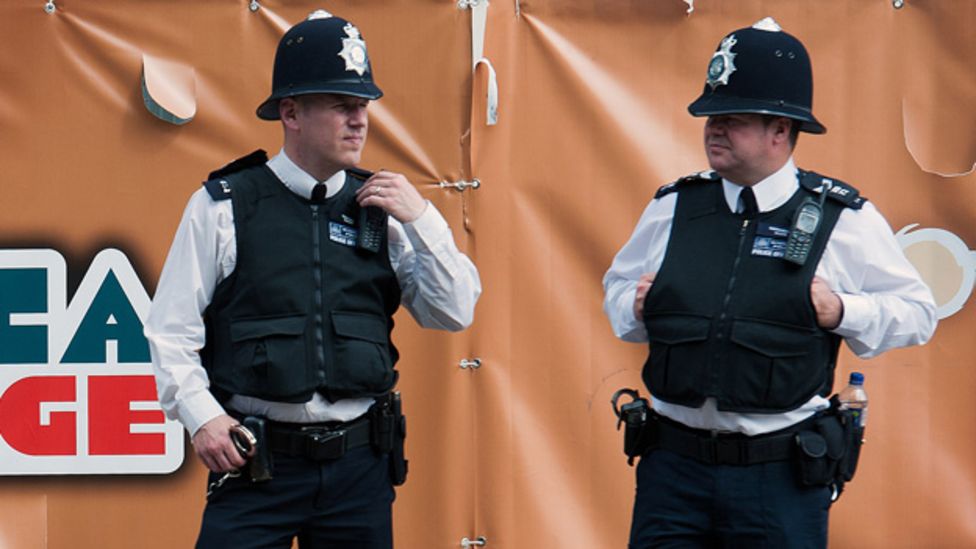Do Prison Officers Carry Guns? Understanding The Role And Responsibilities Of Prison Officers
Prison officers play a crucial role in maintaining security and order within correctional facilities. The question "do prison officers carry guns" is one of the most frequently asked queries related to their duties. Understanding the specifics of their responsibilities and the tools they use is essential to grasp the complexity of their work environment.
In modern correctional systems, prison officers are tasked with managing inmates and ensuring the safety of both staff and prisoners. However, the use of firearms by prison officers varies significantly depending on jurisdiction, facility type, and operational protocols. This article delves into the details of whether prison officers carry guns and the rationale behind their usage or restriction.
By exploring the historical context, legal frameworks, and practical considerations, this article aims to provide a comprehensive understanding of the role of firearms in the daily operations of prison officers. Whether you're a student, researcher, or simply curious about the topic, this article will answer your questions and provide valuable insights.
Read also:Does Drake Have A Wife Exploring The Personal Life Of The Global Superstar
Table of Contents
- The Historical Context of Firearms in Prisons
- Legal Frameworks Governing the Use of Firearms
- Roles and Responsibilities of Prison Officers
- Types of Correctional Facilities and Firearm Usage
- Training and Certification for Firearm Handling
- Statistics on Firearms in Prisons
- Alternatives to Firearms in Prison Security
- Controversies Surrounding Firearms in Prisons
- International Perspectives on Prison Officer Armament
- Conclusion and Key Takeaways
The Historical Context of Firearms in Prisons
The use of firearms in correctional facilities has evolved over time. Historically, firearms were primarily used in maximum-security prisons or during high-risk situations such as riots or escapes. In the early 20th century, many prisons relied on physical force and non-lethal weapons to manage inmate populations. However, as prison populations grew and security threats increased, the need for more effective tools became apparent.
Evolution of Prison Security Measures
Over the decades, advancements in technology and changes in legal standards have influenced the way firearms are used in prisons. In some countries, the introduction of surveillance systems, body cameras, and less-lethal weapons has reduced the reliance on firearms. Despite these advancements, firearms remain a critical component of prison security in certain situations.
Key milestones in the history of firearms in prisons include:
- The introduction of firearms in high-security facilities during the 1960s and 1970s.
- The development of specialized tactical units within correctional departments.
- Increased regulations and restrictions on firearm usage in the 21st century.
Legal Frameworks Governing the Use of Firearms
Do prison officers carry guns? The answer largely depends on the legal frameworks in place. In many countries, the use of firearms by prison officers is strictly regulated by law. These regulations dictate when and how firearms can be used, ensuring that their deployment is proportional and necessary.
Key Legal Provisions
Some of the key legal provisions governing the use of firearms in prisons include:
- Proportionality Principle: Firearms can only be used when less-lethal options are ineffective.
- Accountability Measures: Officers must document and justify every instance of firearm usage.
- Training Requirements: Officers must undergo rigorous training before being authorized to carry firearms.
For example, in the United States, the Federal Bureau of Prisons (BOP) has specific guidelines for firearm usage, emphasizing the importance of de-escalation techniques and minimizing the use of lethal force.
Read also:Drakes Wife The Untold Story Of His Personal Life And Love Life
Roles and Responsibilities of Prison Officers
Prison officers are responsible for maintaining order, supervising inmates, and ensuring the safety of everyone within the facility. While their primary duties involve non-violent interactions, situations may arise where the use of force becomes necessary. Understanding the scope of their responsibilities is crucial to answering the question, "Do prison officers carry guns?"
Key Responsibilities
Some of the key responsibilities of prison officers include:
- Conducting routine patrols and inspections.
- Managing inmate behavior and resolving conflicts.
- Responding to emergencies such as riots or escapes.
In high-risk situations, firearms may be deployed to neutralize threats and protect lives. However, the use of firearms is always a last resort, and officers are trained to prioritize non-lethal solutions whenever possible.
Types of Correctional Facilities and Firearm Usage
The likelihood of prison officers carrying guns varies depending on the type of correctional facility. Maximum-security prisons, for example, are more likely to have armed officers due to the higher risk of violent incidents. Conversely, minimum-security facilities rarely require firearms, as the inmate population poses less of a threat.
Facility Types and Firearm Policies
Here is a breakdown of firearm usage in different types of correctional facilities:
- Maximum-Security Prisons: Armed officers are common, especially in perimeter areas.
- Medium-Security Prisons: Firearms may be available but are used sparingly.
- Minimum-Security Prisons: Firearms are typically not used, as the risk of violence is low.
This variation in firearm policies reflects the differing security needs of each facility type.
Training and Certification for Firearm Handling
Prison officers undergo extensive training to ensure they are capable of handling firearms safely and responsibly. This training covers a wide range of topics, including marksmanship, de-escalation techniques, and legal considerations. The goal is to equip officers with the skills and knowledge needed to make sound decisions in high-pressure situations.
Training Components
The key components of firearm training for prison officers include:
- Target practice and live-fire exercises.
- Scenario-based training to simulate real-world situations.
- Legal and ethical considerations in firearm usage.
Continuous training and recertification are also required to ensure that officers remain proficient and up-to-date with the latest best practices.
Statistics on Firearms in Prisons
Data on firearm usage in prisons provides valuable insights into the frequency and effectiveness of their deployment. According to a study conducted by the National Institute of Justice, firearms are used in less than 1% of all incidents involving prison officers. This low usage rate underscores the emphasis on non-lethal solutions and de-escalation techniques.
Key Statistics
Some key statistics on firearms in prisons include:
- Less than 0.5% of prison officers are involved in firearm-related incidents annually.
- Over 90% of incidents are resolved without the use of firearms.
- Firearms are most commonly used in perimeter security and during escape attempts.
These statistics highlight the importance of comprehensive training and the effectiveness of alternative security measures.
Alternatives to Firearms in Prison Security
In addition to firearms, prison officers rely on a variety of alternative tools and techniques to maintain security. These alternatives include non-lethal weapons, surveillance systems, and communication devices. The use of these tools is often preferred due to their lower risk of causing harm.
Common Alternatives
Some of the most commonly used alternatives to firearms in prison security include:
- Pepper spray and tasers for crowd control.
- Closed-circuit television (CCTV) systems for monitoring.
- Body-worn cameras for accountability and evidence collection.
These tools provide officers with additional options for managing incidents without resorting to lethal force.
Controversies Surrounding Firearms in Prisons
The use of firearms in prisons remains a contentious issue, with debates focusing on their effectiveness, necessity, and potential for misuse. Critics argue that firearms increase the risk of unnecessary violence, while proponents contend that they are essential for maintaining security in high-risk environments.
Key Controversies
Some of the key controversies surrounding firearms in prisons include:
- The potential for accidental discharges and collateral damage.
- The psychological impact of carrying firearms on prison officers.
- The effectiveness of firearms compared to alternative security measures.
Ongoing discussions and research aim to strike a balance between security needs and human rights considerations.
International Perspectives on Prison Officer Armament
The use of firearms by prison officers varies significantly across different countries. In some nations, such as the United Kingdom, prison officers do not carry firearms under normal circumstances. In others, like the United States, firearms are more commonly used, especially in high-security facilities.
Global Comparisons
A comparison of firearm usage in prisons across different countries reveals:
- Strict regulations and limited firearm usage in Scandinavian countries.
- Widespread use of firearms in the United States and other countries with higher crime rates.
- Emphasis on alternative security measures in countries with lower incarceration rates.
These differences reflect varying approaches to prison management and security.
Conclusion and Key Takeaways
In conclusion, the question "Do prison officers carry guns?" cannot be answered with a simple yes or no. The use of firearms by prison officers depends on a variety of factors, including facility type, jurisdiction, and operational protocols. While firearms remain an important tool in certain situations, their deployment is strictly regulated and subject to rigorous training and oversight.
Key takeaways from this article include:
- Firearms are used sparingly in correctional facilities, with a focus on non-lethal alternatives.
- Training and certification are essential for ensuring responsible firearm handling.
- International perspectives highlight the diversity of approaches to prison security.
We invite you to share your thoughts and questions in the comments section below. For more in-depth information on prison security and related topics, explore our other articles and resources. Your feedback and engagement help us continue to provide valuable content for our readers.

